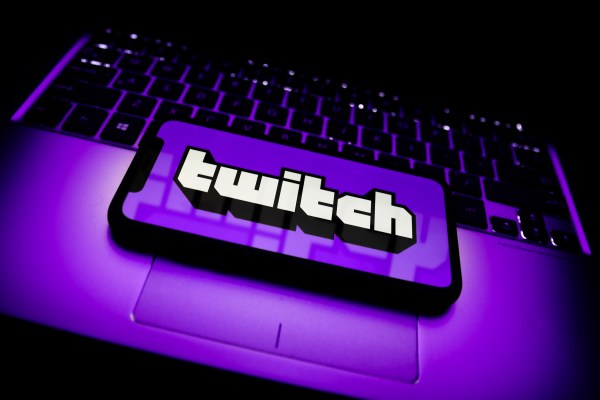Days after freeing the (fictionalized) nipple, Twitch is backtracking on its “artistic nudity” policy that allowed streamers to show illustrated, animated or sculpted renderings of breasts, butts and genitals.
The announcement comes days after Twitch announced sweeping updates to its sexual content policy, which streamlined the platform’s community guidelines and allowed nudity in certain contexts, such as art streams. The reversal comes after many in Twitch’s art community, who have long rallied for the platform to lift restrictions on nudity in art, raised concerns over the volume of AI-generated photorealistic nudes flooding Twitch’s art category since the policy was updated.
Effective Friday, depictions of both real and fictional nudity are banned on Twitch again. Streamers will still be able to show nudity in Mature-rated games.
In a blog post, Twitch CEO Dan Clancy wrote that the company initially updated its nudity policy in response to feedback from art streamers, who complained that the existing restrictions were “limiting.” The update was supposed to allow creators to “utilize the human form in their art,” he said. Since the update on Wednesday, streamers have made a “great deal” of content that was newly allowed on Twitch.
“Much of the content created has been met with community concern. These are concerns we share,” Clancy said. “Upon reflection, we have decided that we went too far with this change. Digital depictions of nudity present a unique challenge — AI can be used to create realistic images, and it can be hard to distinguish between digital art and photography.”
Clancy added that the company isn’t adding further changes to the new sexual content policy.
The initial update was meant to streamline and clarify Twitch’s stance on nudity, but the hyper-specific guidelines that the policy laid out only expanded the gray area between what was and wasn’t allowed on the platform. “Fictionalized” depictions of fully exposed breasts, butts and genitals were allowed, but “augmented reality avatars” like VTubers had to abide by the same attire requirements as regular streamers. A spokesperson for Twitch told TechCrunch that nudity was permitted if fixed, and that VTubers could engage with an audience and make “gestures” that could violate the platform’s policies, which forbid any sexual acts on stream.
Twitch’s dress code policy has not been affected by Friday’s changes. Female-presenting streamers must cover their nipples and aren’t allowed to show “underbust,” but can show cleavage. It’s still unclear if sideboob is allowed.
Under the initial update, artistic nudity was allowed as long as creators labeled their stream as containing “sexual themes.” Content tagged with mature labels — including “drugs, intoxication or excessive tobacco use,” “gambling” and “violent and graphic depictions” in addition to “sexual themes” — are not promoted on Twitch’s homepage recommendations, and must be intentionally sought after by users. A spokesperson for Twitch told TechCrunch that the updated content classification system is intended to ensure that viewers consent to seeing mature content, as well as give advertisers more say over where their ads are shown. Twitch hopes to increase brand confidence in running ads on the platform by doing so.
The lifted restrictions on NSFW content was largely embraced by Twitch’s art community, but others have raised concerns over how the policy was implemented. While few creators called for Twitch to ban nudity altogether, some asked for the platform to add more protections to prevent viewers from seeing mature content, like blurring stream thumbnails and adding filtering options when browsing the art category. On UserVoice, Twitch’s community feedback forum, users also suggested adding a separate mature label for artistic nudity, instead of the general “sexual themes” tag, as well as creating a separate homepage for 18+ content so that creators who tag their streams with mature labels can still be discovered. One artist on UserVoice pointed out that since Wednesday’s update, the art category was overrun with non-art NSFW content and AI-generated nudes.
“Not to say that is not art and those accounts didn’t exist before, they have just appeared in our category due to this new policy,” streamer Kamisama_Kimi wrote. “The art category has been there for years, for people streaming and watching Art, and our beloved space has turned into a bag for those who don’t know which category they should be streaming in, making it quite uncomfortable.”
Social media sites overall struggle to address conditional nudity policies. Consensual nudity and sexual content is permitted on Reddit, and until recently, was allowed on X (formerly Twitter). Moderating “artistic nudity” or “non-sexual nudity” is trickier because the line between nudity and sexual content tends to be subjective. Instagram prohibits nudity with the exception of photos of paintings and sculptures, breastfeeding, birth giving, after-birth moments and health-related situations, such as breast cancer treatment or gender confirmation surgery. Still, users complain that content containing visible, exposed breasts is often flagged and taken down, even if it falls within the policy’s exceptions.
Users have similar complaints about Tumblr, which infamously banned porn in 2018 before walking it back last year with a policy update that allows “nudity and other kinds of adult material” but not “visual depictions of sexually explicit acts or content with an overt focus on genitalia.” Artists and adult content creators say that Tumblr enforces the policy inconsistently, and like Instagram, may remove nude content that doesn’t violate the Community Guidelines.
The sites with the clearest guidelines either allow nudity and sexual content altogether, or don’t. Conditional nudity policies that attempt to separate “good nudity,” like in art, from “bad nudity,” or sexual content, aren’t as progressive as they’re made out to be.
In Twitch’s case, the most meticulous, clear policy language still had loopholes. None of the detailed examples outlined in the updated guidelines addressed the real threat to artists online: realistic AI-generated nudes.
“While I wish we would have predicted this outcome, part of our job is to make adjustments that serve the community,” Clancy said in the post. “I apologize for the confusion that this update has caused.”
